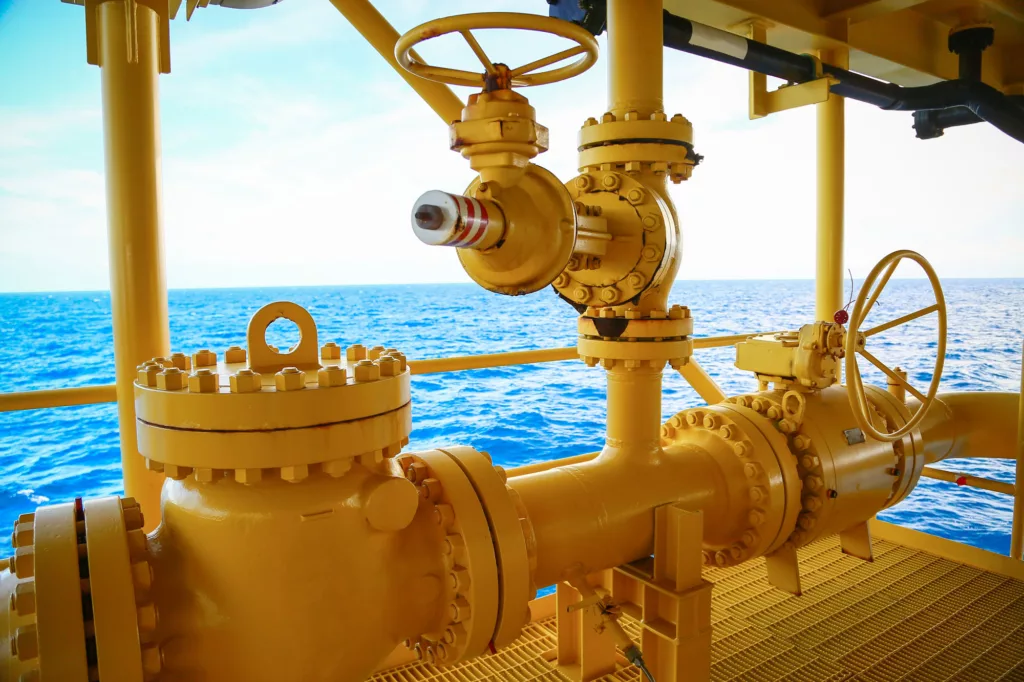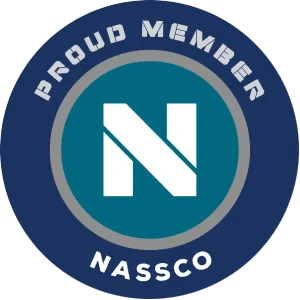Pipe Lining for Offshore
When considering pipe lining for offshore companies – relining the pipes is a cost-effective and efficient solution that offers a lifespan comparable to a new installation. Offshore companies should consider pipe lining as a viable alternative to pipe replacement for several reasons, and Gemini can help guide you.

Pipe lining is the cost-effective and efficient repiping solution for offshore companies – extending the lifespan of existing pipes and minimizing service disruptions.
Offshore companies should consider pipe lining instead of pipe replacement for several reasons:
Cost Savings
Pipe lining is generally more cost-effective compared to complete pipe replacement in offshore environments. The cost of removing and replacing pipelines in offshore operations can be extremely high due to the logistical challenges, specialized equipment, and vessel requirements. Pipe lining eliminates the need for extensive pipeline removal and replacement, resulting in significant cost savings for offshore companies.
Safety Considerations
Pipe relining reduces the potential risks associated with offshore pipe replacement. Traditional pipe replacement in offshore environments involves complex and hazardous operations, including underwater welding and cutting. Pipe lining eliminates or minimizes these risks, improving safety for personnel and reducing the likelihood of incidents or accidents.
Reduced Downtime
Pipe lining allows for in-place rehabilitation of pipelines, minimizing downtime and disruptions to offshore operations. Traditional pipe replacement often involves shutting down production, rerouting pipelines, and potentially interrupting critical offshore activities. In contrast, pipe lining can be performed with minimal disruption, enabling continuous production and reducing downtime.
Regulatory Compliance
Pipe lining helps offshore companies meet regulatory requirements for pipeline integrity and environmental protection. By proactively addressing pipeline issues through lining, companies can demonstrate compliance with safety regulations and environmental standards. This reduces the risk of penalties and ensures the company’s operations align with industry regulations.
Environmental Impact
Pipe lining offers environmental benefits compared to pipe replacement in offshore environments. It reduces the need for extensive excavation and removal of pipelines, minimizing disturbance to marine ecosystems and habitats. Pipe lining also reduces the generation of construction waste, reducing the environmental footprint associated with offshore operations.
Logistics and Operational Efficiency
Pipe lining projects in offshore environments generally have shorter project timelines compared to pipe replacement. This allows offshore companies to quickly address pipeline integrity issues and resume operations more rapidly. With reduced project durations, companies can optimize production and minimize revenue losses associated with extended downtime.
Extended Asset Lifespan
Pipe lining can extend the lifespan of existing pipelines in offshore settings. By applying a new lining, the integrity of the pipes is restored, preventing further deterioration and minimizing the risk of leaks or failures. This extends the useful life of the pipelines, delaying the need for extensive replacements and providing long-term cost savings for offshore companies.
Expertise and Industry Support
Pipe lining projects in offshore settings often require specialized expertise and industry support. Numerous companies and professionals specialize in offshore pipeline rehabilitation and offer comprehensive services tailored to the unique challenges of offshore environments. Partnering with experienced experts ensures that the pipe lining process is performed efficiently, accurately, and in compliance with industry standards.
By considering these benefits, offshore companies can make informed decisions and choose pipe lining as a cost-effective, efficient, and environmentally friendly solution for maintaining and rehabilitating their subsea pipeline infrastructure. Pipe lining allows companies to optimize production, extend the life of their assets, ensure pipeline integrity, and minimize costs and operational disruptions in their offshore operations.
If your mining operation is planning an expensive pipe project, there are several important factors to consider:
Site Conditions: Assess the specific site conditions where the pipe lining project will take place. Offshore environments present unique challenges, such as corrosive saltwater, high-pressure conditions, and exposure to harsh weather. Evaluate the impact of these conditions on the choice of lining materials and installation methods.
Environmental Impact: Evaluate the environmental impact of the pipe lining project and implement measures to minimize disruption to the marine ecosystem. Consider the potential release of any contaminants during the lining process and implement appropriate safeguards to protect marine life and habitats. Comply with environmental regulations and industry best practices to ensure responsible offshore operations.
Material Selection: Select lining materials that are suitable for offshore applications. Consider factors such as corrosion resistance, resistance to biofouling, mechanical strength, and durability in marine environments. The chosen materials should be capable of withstanding the specific offshore conditions, including saltwater exposure and potential abrasive forces.
Logistics and Supply Chain: Plan and coordinate the logistics and supply chain for the pipe lining project. Consider factors such as vessel availability, equipment mobilization, and offshore support services. Optimize scheduling and coordination to minimize downtime and ensure smooth project execution.
Regulatory Compliance: Ensure compliance with offshore regulations and industry standards for pipeline rehabilitation. Offshore operations are subject to strict safety and environmental regulations. Adhere to relevant standards to ensure the integrity of the pipeline system and minimize risks to personnel, the environment, and operations.
Health, Safety, and Risk Management: Prioritize health, safety, and risk management throughout the offshore pipe lining project. Implement robust safety protocols, provide appropriate training to personnel, and conduct thorough risk assessments. Consider the unique challenges of working offshore, such as weather conditions, potential subsea hazards, and emergency response protocols.
Pipeline Assessment: Conduct a thorough inspection and assessment of the existing pipelines to identify any issues or damage that need to be addressed through lining. Utilize technologies such as remotely operated vehicles (ROVs), sonar imaging, and integrity testing to assess the condition of the pipelines and identify areas of concern.
Project Budget and Cost Analysis: Develop a detailed budget for the offshore pipe lining project, considering the cost of lining materials, equipment, vessel support, and associated expenses. Conduct a cost-benefit analysis to evaluate the financial viability of pipe lining compared to other alternatives. Consider potential cost savings from reduced downtime, extended asset lifespan, and lower maintenance needs.
Installation Method and Equipment: Determine the most appropriate installation method and equipment for offshore pipe lining. Consider factors such as access to the pipelines, water depths, and the presence of subsea infrastructure. Offshore projects often require specialized equipment, such as diving support vessels, ROVs, and remote installation techniques. Ensure that the chosen method and equipment align with the offshore capabilities and logistics.
Documentation and Reporting: Maintain comprehensive documentation throughout the pipe lining project. Document project specifications, inspection reports, installation procedures, and any other relevant information. Ensure accurate reporting of project progress, compliance with regulations, and any required environmental or safety documentation.
I worked with Gemini for the last year after the HOA I manage hired them to consult on a large cast iron pipe rehab project. They are very professional and easy to work with. Sean helped with complicated issues and helped with common-sense solutions.
Mike Silcox
Property Manager




